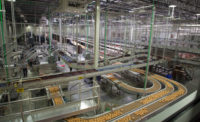Food Safety in Africa: 'Critical Gaps' Need To Be Fixed

Africa’s food safety regulations need to be improved, according to speakers at a roundtable discussion held during the week of November 8, 2021. Speakers emphasized the need to build capacity, engage policymakers, and use technology to improve food safety.
The session, organized by the Africa Union Commission, took place at the African Continental Association for Food Protection (ACAFP) Conference on Food Safety in Africa. ACAFP is an affiliate of the International Association of Food Protection (IAFP).
Enforcing food safety is still a challenge in Africa because most of the continent’s trade is informal. Therefore, more data and evidence on traders will be necessary, including trading practices and what must be done to help Africa’s food trade become mainstream in ways that can promote food safety and better access to nutritious food, said Ade Freeman, regional program leader for the Food and Agriculture Organization (FAO). Strong regional value chains are key to correcting continent-wide vulnerabilities in food safety.
AOAC International Sub-Saharan Africa Section also held its annual meeting during the week of November 8, which brought attention to a pervasive lack of ISO-certified food safety testing laboratories, as only 63 percent of African labs are certified to ISO as compared to 100 percent of labs in Europe. AOAC International Sub-Saharan Africa Section’s membership survey also revealed gaps in training programs, with an alarming 40 percent of survey-takers reporting that their businesses had no active training. Also, more than one-fifth of labs do not use official analytical methods.
The AOAC event took place online, and the results of the membership survey were discussed virtually. The event brought together government, academia, and industry personnel to promote food safety and food integrity. AOAC International emphasized that the current gaps in Africa's food safety policies could have troubling consequences for both public health and economic growth, especially in light of Africa’s Continental Free Trade Area goal of increasing intra-continental exports by more than 80 percent by 2035.
Looking for a reprint of this article?
From high-res PDFs to custom plaques, order your copy today!








